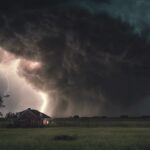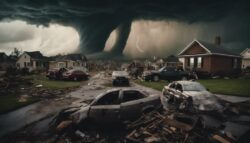Tornado Fatalities: A Historical Insight
In 1925, the Tri-State Tornado rampaged through Missouri, Illinois, and Indiana, claiming 695 lives, marking it as one of the deadliest tornadoes in U.S. history. We've dug into the numbers and patterns since then, curious about how advancements in warning systems and community preparedness have influenced the death tolls from similar disasters. While technology has certainly evolved, the question remains: has it notably reduced the number of lives lost to these unpredictable forces of nature? Our findings invite you to explore a century's worth of data and consider the effectiveness of modern safety measures.
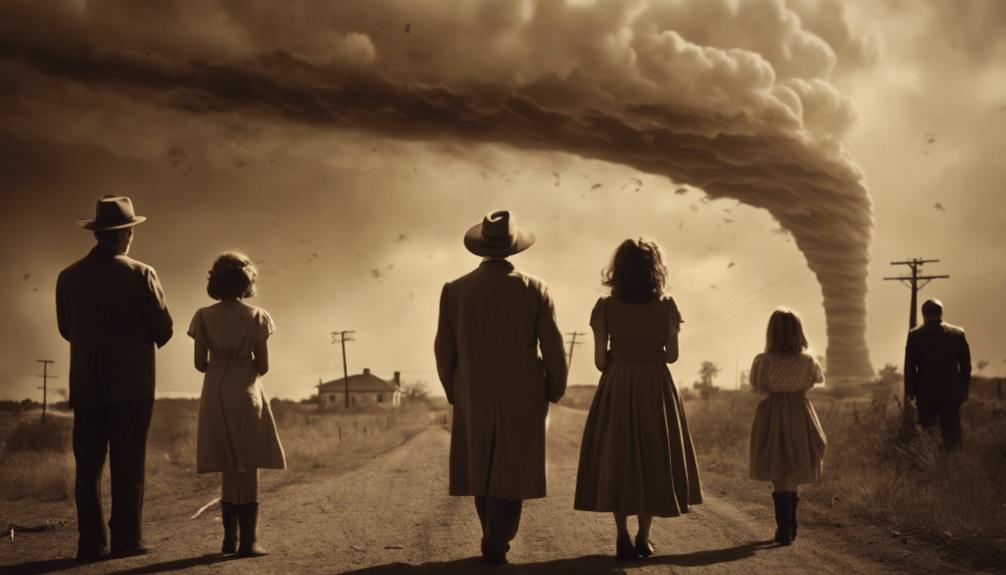
Key Takeaways
- Reliable data on tornado fatalities dates back to 1875, enabling historical trend analysis.
- Tornado death rates per million population have stabilized in recent decades.
- The data differentiates between direct and indirect tornado-related deaths, focusing on direct impacts.
- Historical insights into tornado fatalities help understand and mitigate severe weather impacts.
Data Sources and Reliability
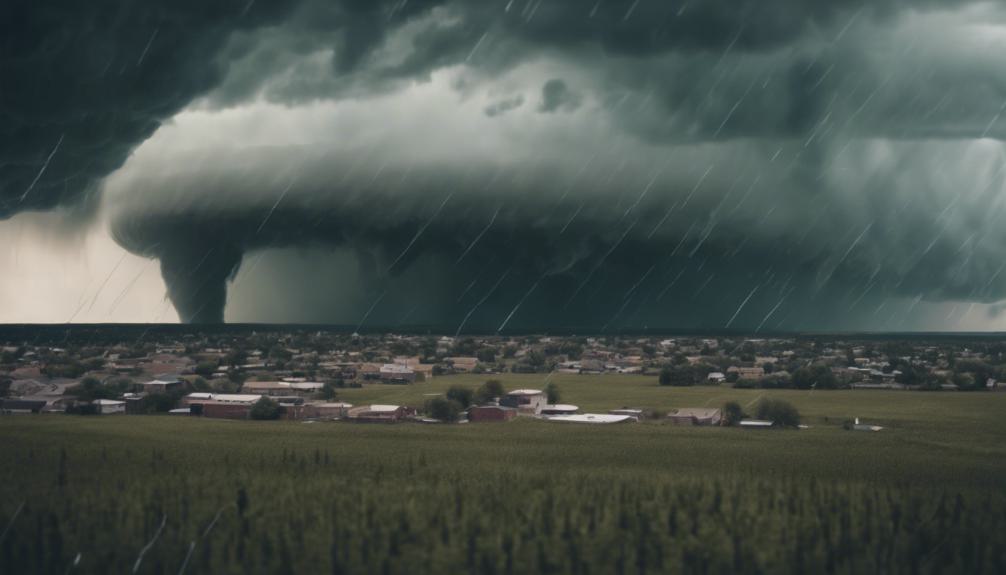
To guarantee accuracy in our analysis of tornado fatalities, we've relied on several reputable sources, including the National Weather Service archive and the exhaustive Grazulis data. It's important for us to provide you with the most reliable information available so you can make informed decisions and help those affected by these devastating events. By cross-referencing the National Weather Service's records from 1950 onwards with the Grazulis dataset that estimates deaths back to around 1875, we've made certain our findings are as accurate as possible. We acknowledge that additional findings could prompt revisions, so we're committed to updating our data to reflect the most current understanding. Our goal is to serve our community by offering insights that can aid in preparation and response to tornado-related disasters.
Trends in Death Rates

Analyzing trends in tornado death rates reveals that, despite fluctuations, the per capita impact has largely stabilized in recent years. This stabilization is a critical to the strides we've made in early warning systems, public education, and community preparedness. We've seen how, through concerted efforts, we can substantially reduce the devastating effects of tornadoes on our communities. It's essential we continue to support these initiatives, ensuring everyone has access to life-saving information and resources. By understanding these trends, we're better equipped to serve those in vulnerable areas, focusing our efforts where they're needed most. Together, we can further decrease tornado-related fatalities, making our communities safer for everyone. It's a shared responsibility we must all embrace.
Types of Fatalities
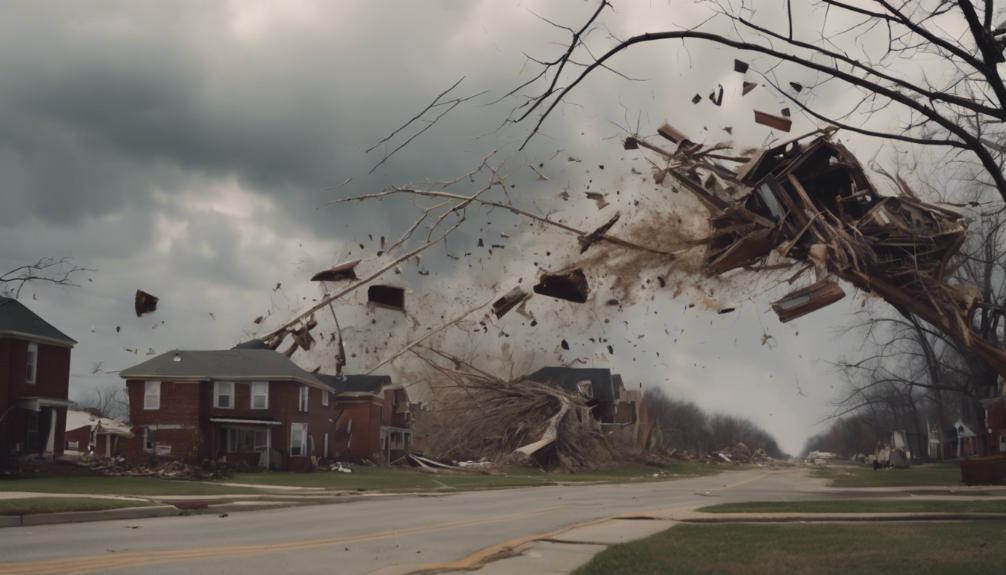
We'll explore how tornado fatalities are categorized, focusing on the distinction between direct and indirect deaths. Direct deaths occur as a result of the immediate impact of a tornado, such as being struck by debris or trapped under collapsed structures. These are the fatalities most often reported and serve as a critical reminder of a tornado's destructive power. On the other hand, indirect deaths, though not immediately caused by the tornado's physical impact, are nonetheless related. These can include heart attacks due to stress, accidents during cleanup efforts, or injuries sustained during the event that later prove fatal. Understanding this distinction helps us better appreciate the full spectrum of a tornado's impact on communities. It's important for those of us seeking to serve and support affected areas to grasp both these aspects to aid effectively.
Historical Overview
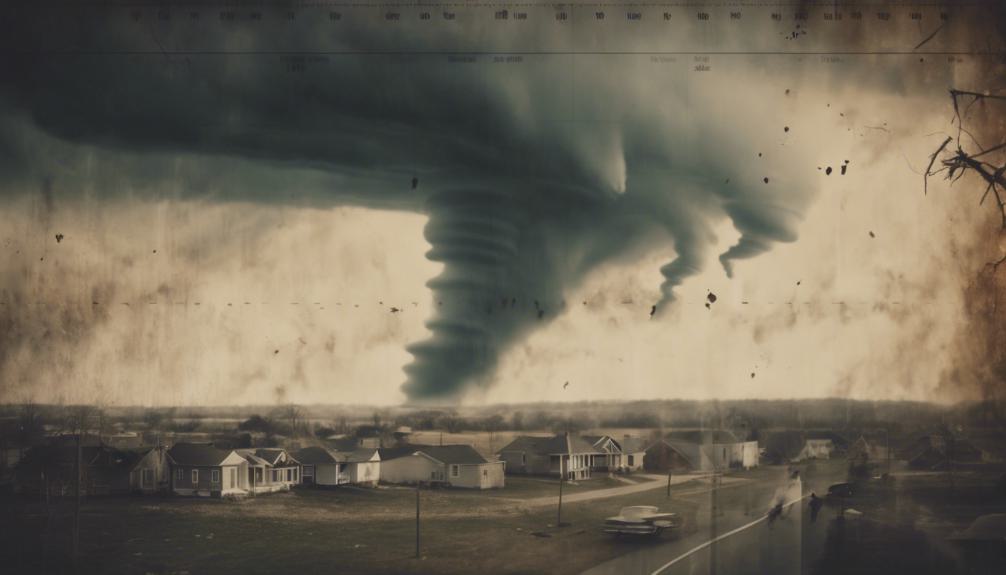
Understanding the distinction between direct and indirect tornado fatalities enriches our grasp of their impact, leading us to explore the historical data on these devastating events. We've delved into records spanning from 1875 to the present, drawing from the Grazulis data for early years and the National Weather Service (NWS) archives for more recent decades. This journey through history isn't just an academic exercise; it's a quest to better serve communities by comprehending the evolution of tornado impacts over time. Our examination reveals trends and offers insights that are important for those dedicated to aiding affected populations. We're committed to rectifying any errors in recorded fatalities, ensuring our understanding, and by extension, our service, is based on the most accurate information available.
Purpose of Data Sharing
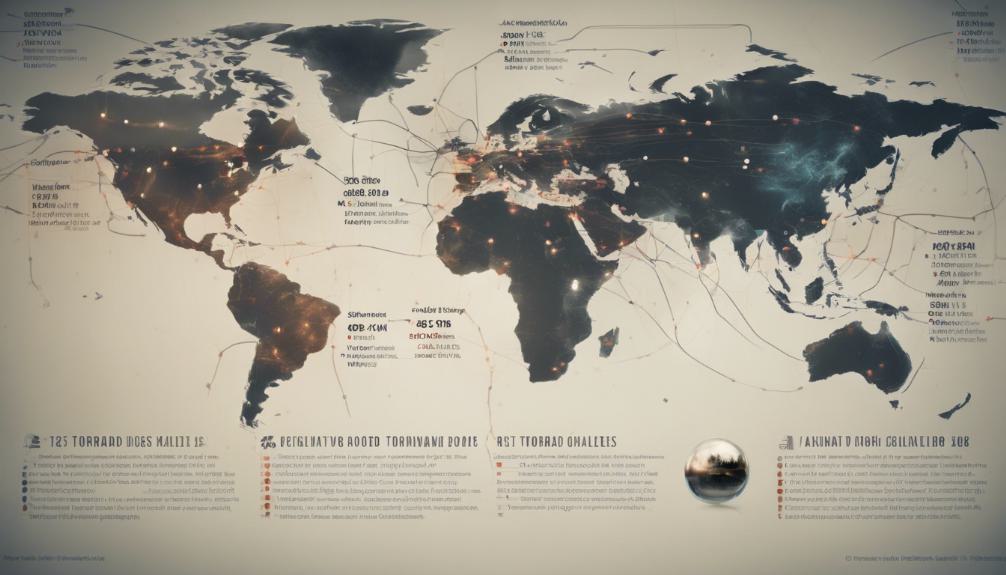
By sharing this data, we aim to empower individuals and communities with the knowledge necessary to better understand and mitigate the impacts of severe weather events. Our goal is to foster a proactive approach to safety, encouraging preparedness and resilience in the face of tornado threats. By making this information readily available, we're not just sharing numbers; we're sharing a tool for survival and adaptation. It's our belief that through informed awareness, lives can be saved, and the collective well-being of our communities can be enhanced. We're committed to serving others by providing this vital data, hoping it serves as a foundation for informed decision-making and a catalyst for positive change in how we respond to tornadoes.
Future Research Directions
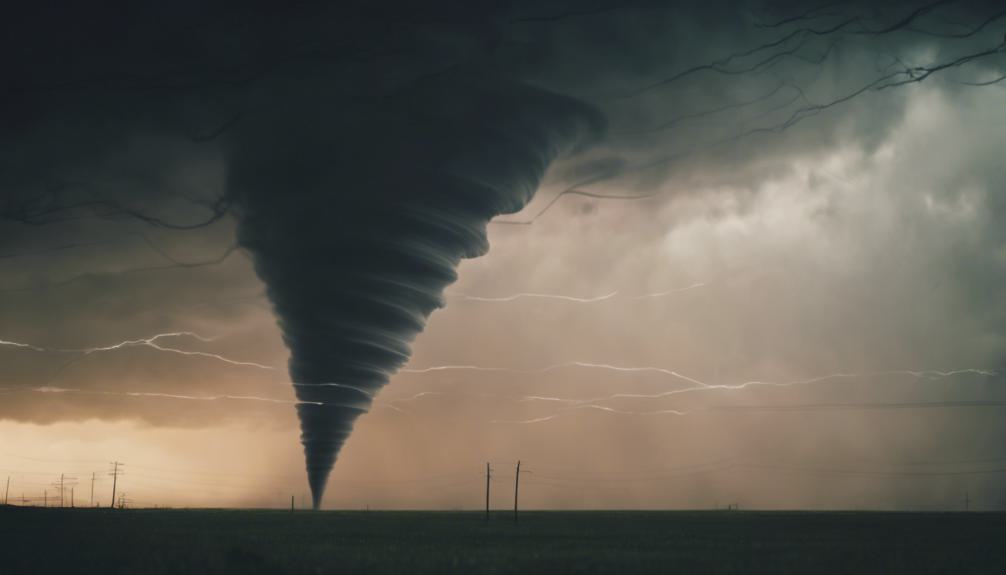
Exploring new methodologies and technologies promises to enhance our understanding of tornado fatalities further. We're determined to dive deeper into predictive analytics and machine learning to forecast tornado impacts more accurately. This will not only shed light on potential future trends but also empower us to develop more effective early warning systems. We're also focusing on improving data collection techniques to make certain that every fatality is accounted for, providing a clearer picture of tornado impacts. Collaborating with communities prone to tornadoes, we aim to implement practical safety measures and education programs. Our goal is to greatly reduce the number of lives lost to tornadoes by equipping individuals and communities with the knowledge and tools they need to protect themselves.
Frequently Asked Questions
How Do Tornado Fatalities Compare With Deaths From Other Natural Disasters Such as Hurricanes, Earthquakes, or Wildfires Annually in the United States?
Ironically, we're often more fascinated by tornadoes, yet when comparing, hurricanes, earthquakes, and wildfires annually claim more lives in the U.S. We're committed to shedding light on these differences to better serve those affected.
Are Certain Regions Within the United States More Prone to Deadly Tornadoes, and How Has This Geographic Distribution Changed Over Time?
We've noticed that certain areas in the U.S. are more vulnerable to deadly tornadoes. Over time, the geographic distribution has shifted, reflecting changes in population density and possibly climate patterns affecting tornado formation and paths.
What Specific Safety Measures and Technologies Have Been Most Effective in Reducing Tornado-Related Fatalities Over the Years?
We've seen how embracing early warning systems and sturdy shelters has greatly softened the blow from nature's fury, offering a safer haven for communities. It's our mission to keep pushing these life-saving measures forward.
How Do Socioeconomic Factors Influence the Likelihood of Fatalities During Tornado Events?
We're exploring how socioeconomic factors affect tornado fatality risks. It's clear that people's economic status and access to resources greatly influence their vulnerability and ability to recover from these devastating events.
What Role Do Climate Change and Global Warming Play in the Frequency and Intensity of Tornadoes, and Consequently, in Tornado Fatality Rates?
We're exploring how climate change might be affecting tornado patterns and their deadly impacts. Understanding this can help us better serve communities at risk, ensuring they're more prepared for these increasingly unpredictable weather events.

This post has been generated by AI and was not reviewed by editors. This is Not legal advice. Please consult with an attorney.

